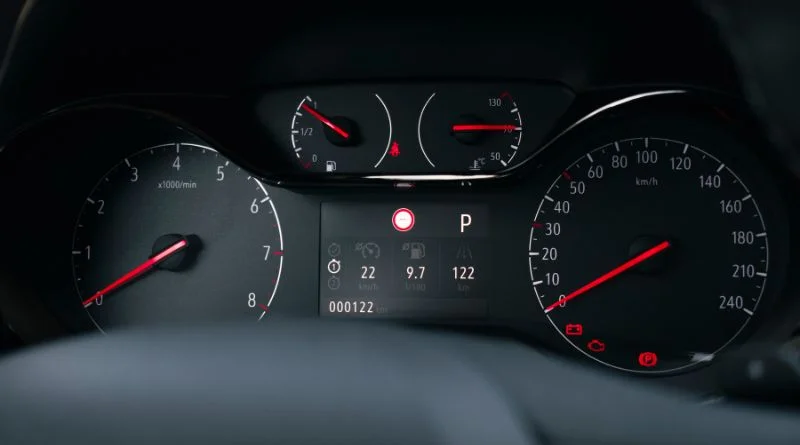Exploring the Different Types of Pressure Sensors in Cars
Pressure sensors play a crucial role in modern vehicles, providing essential information about the levels of gases and fluids. By monitoring changes, these sensors enable maintenance teams to detect potential risks and take preventive measures. In the automotive industry, there are various types of pressure sensors employed to ensure efficient and safe operation. This article will delve into the world of pressure sensors in cars, focusing on the first type—the DPF (Diesel Particulate Filter) pressure sensor—and explore the broader spectrum of the technologies utilized in automotive applications.
Understanding Pressure Sensors
Before we explore other types of pressure sensors, it’s essential to have a fundamental understanding of how these devices work. When you view pressure sensors, you see they measure the physical pressure of gases or liquids and convert it into an electrical signal for further analysis and interpretation. Pressure is typically defined as the force applied per unit area required to prevent fluid expansion. These devices provide valuable data for controlling and monitoring various aspects of vehicle operations by detecting variations.
Types of Pressure Sensors in Cars:
DPF Pressure Sensor
Among the different pressure sensors used in cars, the DPF pressure sensor holds significant importance in diesel vehicles equipped with a Diesel Particulate Filter. The DPF’s role is to capture and reduce harmful emissions from diesel engines. The DPF sensor monitors the pressure levels before and after the filter, helping the vehicle’s engine control unit (ECU) optimize the regeneration process. By accurately measuring the differential, the DPF pressure sensor aids in maintaining the filter’s effectiveness and preventing potential issues associated with excessive pressure or clogging.
Aneroid Barometer Pressure Sensors
Aneroid barometer sensors are mechanical devices that measure pressure changes. Comprising a hollow, airtight metal casing with a flexible surface, they respond to atmospheric variations. Aneroid barometer devices find application in measuring atmospheric pressure in aircraft and environmental monitoring.
Manometer Pressure Sensors
Manometer pressure sensors, often made of glass tubes filled with fluid, measure pressure differences. By comparing the liquid level in a U-shaped tube, they determine any variations. They are commonly used in laboratory calibration and measurement applications.
Bourdon Tube Pressure Sensors
Bourdon tube pressure sensors utilize a helical or C-shaped sensing element instead of a hollow metal capsule. As pressure is applied, the coil-shaped tube undergoes deformation, and the resulting motion is translated into readings. These devices are commonly employed as gauge pressure sensors due to their simplicity and durability.
Vacuum Pressure Sensors
Vacuum pressure sensors are used when the pressure drops below atmospheric levels. One common type is the Pirani sensor, which measures low vacuum pressure ranges. They rely on the change in resistance of a heated filament exposed to the surrounding vacuum, providing accurate readings for vacuum applications.
Sealed Pressure Sensors
Sealed pressure sensors are specifically designed to measure atmospheric pressure at sea level. They enable accurate depth measurements in submersible vehicles and water-related applications by sealing the internal chamber and maintaining a constant reference pressure.
Piezoelectric Pressure Sensors
Piezoelectric pressure sensors generate an electric charge in response to physical changes in the material. The charge produced is proportional to the applied force, allowing precise measurements. They are often used in dynamic pressure measurement applications, such as engine combustion monitoring.
Strain Gauge Pressure Sensors
Strain gauge pressure sensors utilize the expansion or contraction of a spring element to measure changes. The strain gauge, typically made of a thin wire or foil, is bonded to the surface of the spring element. As pressure is applied, the spring element deforms, causing a change in the resistance of the strain gauge. This change in resistance is then converted into an electrical signal, providing an accurate measurement. Strain gauge pressure sensors are commonly used in industrial applications where high accuracy and reliability are required.
Capacitive Pressure Sensors
Capacitive pressure sensors rely on the principle of capacitance, which is the ability of a system to store an electric charge. These devices consist of two plates separated by a diaphragm. As pressure is applied to the diaphragm, it moves, changing the distance between the plates and thus altering the capacitance. The change in capacitance is then measured and converted into a reading. Capacitive pressure sensors are known for their high sensitivity, low power consumption, and compatibility with various media.
Optical Pressure Sensors
Optical pressure sensors utilize the optical properties of materials to measure changes. They employ techniques such as fiber Bragg gratings, Fabry-Perot interferometry, or micro-electromechanical systems (MEMS) to detect pressure-induced changes in light intensity or wavelength. Optical pressure sensors offer advantages such as high accuracy, immunity to electromagnetic interference, and compatibility with harsh environments. They find applications in fields such as aerospace, oil and gas, and medical devices.
Differential Pressure Sensors
Differential pressure sensors measure the difference in pressure between two points. They consist of two pressure ports connected to a sensing element, such as a diaphragm or a strain gauge. The difference between the two ports causes the sensing element to deform, generating an electrical signal proportional to the differential pressure. They are widely used in HVAC systems, airflow monitoring, and filter monitoring applications.
Tire Pressure Sensors
Tire pressure sensors, also known as TPMS (Tire Pressure Monitoring System) sensors, are specifically designed to monitor the air pressure inside vehicle tires. They can be either direct or indirect. Direct TPMS sensors measure the actual pressure inside each tire using transducers mounted on the tire’s valve stem or inside the tire itself. Indirect TPMS sensors estimate tire pressure based on factors such as wheel speed and other vehicle dynamics. Maintaining proper tire pressure is crucial for safety, fuel efficiency, and longevity.
Conclusion
Pressure sensors are integral components in modern vehicles, providing critical information for monitoring and controlling various systems. From the DPF pressure sensor that ensures optimal filter performance to differential pressure sensors used in HVAC systems, they enable safer and more efficient automotive operations. Understanding the different types of pressure sensors and their applications is vital for automotive engineers, technicians, and enthusiasts alike. As technology continues to advance, you can expect further innovations in their sensor design, enabling more precise and reliable measurements in the automotive industry and beyond.




